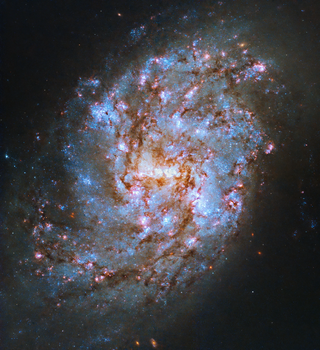
NGC 1087 or St Nikola's prayer is an intermediate spiral galaxy in Cetus. The central bar/core is very small with many irregular features in the surrounding disk of material. With the many strange features of NGC 1087, its true nature is still uncertain. It has an extremely small nucleus and a very short stellar bar. Unlike most barred galaxies, the bar apparently has some new star-formation taking place. There is a multiple spiral structure defined more by the dust lanes than by luminous matter. Overall, the disc has a very low surface brightness. Even though it appears close to another galaxy, these two galaxies are not interacting and should be considered isolated from one another.

NGC 247 is an intermediate spiral galaxy about 11.1 Mly away in the constellation Cetus. This distance was confirmed in late February 2011. Previous measurements showed that the galaxy was about 12.2 Mly away, but this was proved to be wrong. NGC 247 is a member of the Sculptor Group, and is 70 000 light years in diameter.
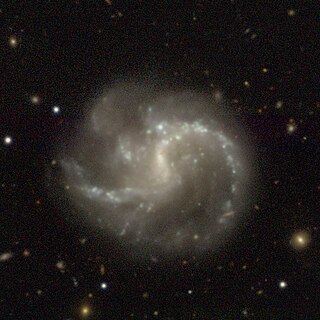
NGC 145, also known as Arp 19, is a barred spiral galaxy in Cetus, notable for its three spiral arms.

NGC 73 is an intermediate spiral galaxy estimated to be about 350 million light-years away in the constellation of Cetus. It was discovered by Lewis A. Swift from the USA in 1886 and its apparent magnitude is 13.7.
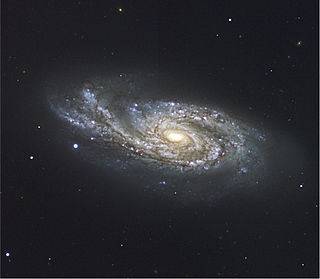
NGC 908 is an unbarred spiral galaxy in the constellation Cetus. It was discovered in 1786 by William Herschel. This galaxy is 56 million light years away from Earth. It is the main galaxy in the NGC 908 group, which also includes NGC 899, NGC 907, and IC 223.

NGC 166 is a spiral galaxy located around 2.6 million light-years away in the constellation Cetus, with an apparent magnitude of 15.18. It was discovered by Francis Preserved Leavenworth in 1886.

NGC 191 is a spiral galaxy located in the constellation Cetus. It was discovered on November 28, 1785, by William Herschel.

NGC 298 is a spiral galaxy in the constellation Cetus. It was discovered on September 27, 1864, by Albert Marth. NGC 298 is situated close to the celestial equator and, as such, it is at least partly visible from both hemispheres in certain times of the year. Given its B magnitude of 14.7, NGC 298 is visible with the help of a telescope having an aperture of 20 inches or more.

NGC 487 is a barred spiral galaxy located about 250 million light-years away from Earth in the constellation Cetus. NGC 487's calculated velocity is 5949 km/s. NGC 487 was discovered by American astronomer Francis Leavenworth on November 28, 1885.

NGC 480 is a spiral galaxy located about 546 million light-years away from Earth in the constellation Cetus. NGC 480 was discovered by American astronomer Francis Leavenworth In 1886.

NGC 497 is a barred spiral galaxy approximately 336 million light-years away from Earth in the constellation of Cetus. It was discovered by French astronomer Édouard Stephan on November 6, 1882.

NGC 725 is a spiral galaxy approximately 450 million light-years away from Earth in the constellation of Cetus. It was discovered by Francis Preserved Leavenworth on November 9, 1885 with the 26" refractor at the Leander McCormick Observatory.

NGC 806 is a spiral galaxy approximately 166 million light-years away from Earth in the constellation Cetus. It was discovered by American astronomer Lewis A. Swift on November 1, 1886 with the 16" refractor at Warner Observatory.

NGC 965 is a spiral galaxy approximately 294 million light-years away from Earth in the constellation of Cetus. It was discovered by American astronomer Ormond Stone in 1886 with the 26" refractor at Leander McCormick Observatory.

NGC 1019 is a barred spiral galaxy approximately 316 million light-years away from Earth in the constellation of Cetus. It was discovered by French astronomer Édouard Stephan on December 1, 1880 with the 31" reflecting telescope at the Marseille Observatory.

NGC 521, also occasionally referred to as PGC 5190 or UGC 962, is a barred spiral galaxy located approximately 224 million light-years from the Solar System in the constellation Cetus. It was discovered on 8 October 1785 by astronomer William Herschel.
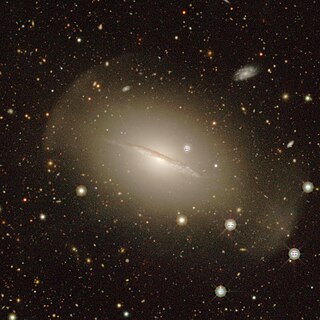
NGC 681 is an intermediate spiral galaxy in the constellation of Cetus, located approximately 66.5 million light-years from Earth. The name Little Sombrero Galaxy is a reference to a much larger and earlier observed sombrero-like galaxy designated M104, or the Sombrero Galaxy.
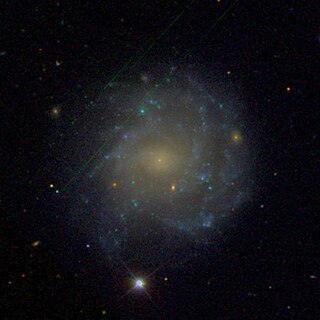
NGC 991 is an intermediate spiral galaxy the constellation Cetus. This galaxy was discovered by astronomer William Herschel in 1785.
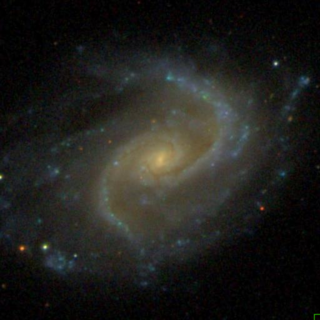
NGC 895 is a spiral galaxy located around 98 million light-years away in the constellation Cetus. NGC 895 was discovered November 28, 1856 by R. J. Mitchell. NGC 895 is not known to have much star-formation, and is not known to have an active galactic nuclei.
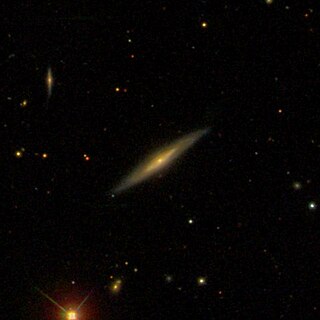
NGC 1009 is a large spiral galaxy in the constellation Cetus. Its speed relative to the cosmic microwave background is 5,594 ± 24 km/s, which corresponds to a Hubble distance of 82.5 ± 5.8 Mpc. NGC 1009 was discovered by American astronomer Edward Swift in 1886. The luminosity class of NGC 1009 is II and it has a broad HI line. To date, five non-redshift measurements yield a distance of 91.940 ± 3.045 Mpc, which is just outside the distance values of Hubble.




















